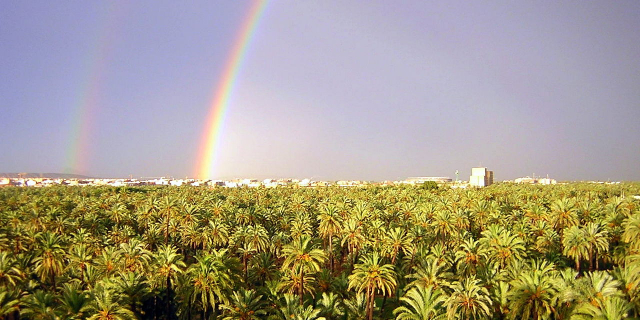Illa de Tabarca
( Tabarca )Tabarca (Valencian: [taˈbaɾka], Spanish: [taˈβaɾka]), officially Nueva Tabarca and also known as Isla Plana (Spanish) and as Nova Tabarca and Illa Plana in Valencian, is an islet located in the Mediterranean Sea, close to the town of Santa Pola, in the province of Alicante, Valencian community, Spain. Tabarca is the largest island in the Valencian Community, and the smallest permanently inhabited islet in Spain. It is known for its marine reserve.
Before 1700, the island was known as Illa de Sant Pau ('Saint Paul's Island') or Illa Plana ('Flat Island'). Believed to be the island that St. Paul disembarked on, the island was a refuge for Barbary pirates up to the end of the 18th century and used as a base for raids on the Levantine coast.
The island's current namesake is a Tunisian islet and town of Tabarka, which was a part of the Republic of Genoa until it was conquered by the Bey of Tunis in 1741. In 1760, Charles III of Spain ordered the fortification and repopulation of the Spanish island. A group of Genoese sailors who had been shipwrecked near the Tunisian Tabarka were rescued and settled here.
 Plan of the city.
Plan of the city.On their arrival, the Genoese were first moved to Alicante, where they lived temporarily in the Jesuit School, which was empty after the expulsion of the Jesuits from Spain. Eventually, the Genoese were moved to the island, together with a Spanish garrison. The military engineer Fernando Méndez Ras planned a fortified town and walls, bulwarks, warehouses and barracks were built. From 1770, the island was renamed Nova Tabarca ("New Tabarca" in both Valencian and Latin).
Although the Genoese assimilated, abandoning their language in favor of Valencian and, later, Spanish (both languages are currently spoken on the islet), the Genoese descent of the settlers can still be found in the surnames of Italian origin common on the islet.
The island is twinned with Carloforte, in the Sardinian San Pietro Island, which was also populated with Genoese from Tunisian Tabarka.
The gateways are still visible and so are the Governor's House (currently a hotel) and the church of St Peter and St Paul, concluded in 1779.
In 1850, the governor and the garrison were removed. At the end of the 19th century, the island had a population of around 1,000 people mainly devoted to fishing. In the early 21st century, the permanent population was around 50, making Tabarca the smallest permanently inhabited Spanish island (although this number is multiplied by ten during the tourist season in summer).
The main activity of the local population is fishing, with the catch brought to Santa Pola's fish market, but tourism becomes the most important resource during summer, especially in July and August.





































Add new comment